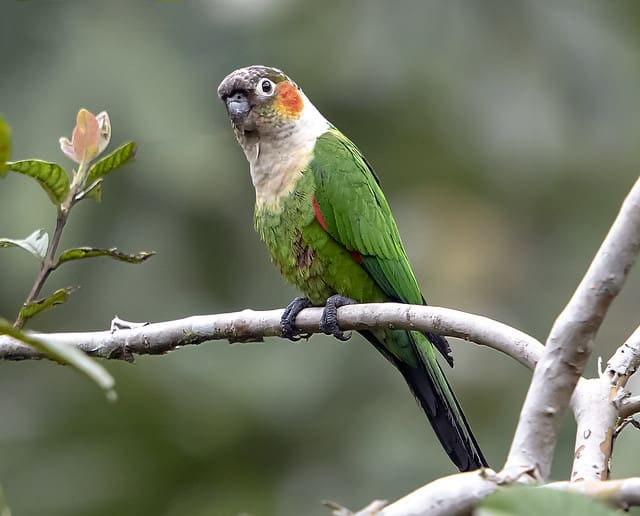The White-necked Conure (Pyrrhura albipectus) is losing ground to human activity and the wild bird trade.
The World Parrot Trust supported the work of the Parrots in Peril team in the early 1990s, to study the distribution, status and ecology of these threatened conures. The World Parrot Trust supported research that aimed to determine that Podocarpus National Park is a key site for the conservation of three endangered species, assess the effectiveness of the park as a protected area by studying threats to its integrity (ie: gold mining) and gather basic biological information pertinent to the conservation of the parrots
The Parrots in Peril team learned that the range for these species is wider than previously thought. This critical work also underlined the importance of Podocarpus National Park for all of the threatened species, White-breasted Conure, Red-faced Parrot (Hapalopsittaca pyrrhops) and Golden-plumed Conure (Leptopsittaca branickii).
Status: IUCN Vulnerable / CITES Appendix II
Population: 2500–10,000
Range: Found in the east slope of Andes in SE Ecuador and N Peru.
Natural history: White-necked Conures are found from 900-1700 m (2952-5576 ft) in humid forests in upper tropical and subtropical zones, preferring upland forests along waterways, mainly in primary forests and will tolerate some habitat disturbance. They favour flowers of different vines, fruits, and berries in their diet. These parrots are seen in flocks of a dozen or less, but sometimes up to 50, feeding in the upper canopy. They bathe in rockpools or among moss-covered rocks.

